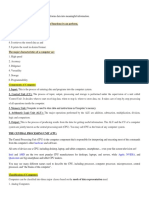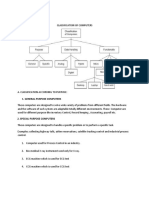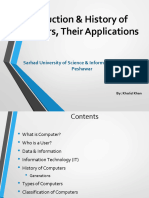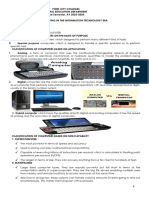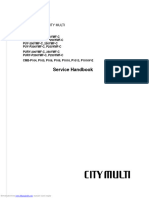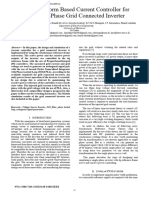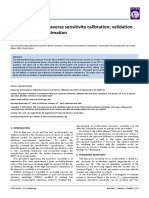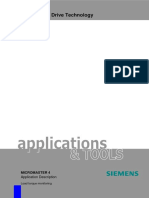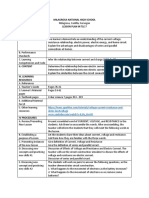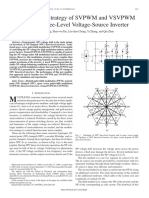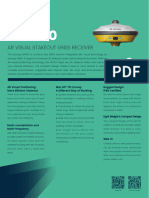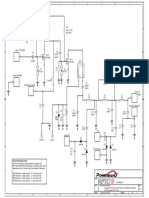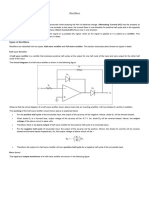Name: Maria Serine A.
Gubalane Course & Section: BSIE 1-A Date: 08-23-25
Computer Fundamentals and Programming
“Types of Computers and the Evolution of Computers”
A computer is a machine that can be programmed to manipulate symbols. Classifications of
computers by size includes the following:
• Supercomputers
• Mainframe computers
• Minicomputers
• Personal computers (PCs) or microcomputers
SUPERCOMPUTERS - Is an extremely fast and powerful computer used for complex tasks
like scientific simulations, weather forecasting, and research. Are useful for applications
involving very large databases or that require a great amount of computation.
Supercomputers are used for areas related to: Science, Engineering, Education, Defence,
Aerospace
MAINFRAME COMPUTERS - Are powerful systems used by large organizations to process vast
amounts of data and run critical applications with high speed, reliability, and support for many
users simultaneously.
Mainframe computers are useful for tasks related to: Census taking, Industry and consumer
statistics, Enterprise resource planning, Transaction processing, e-business and e-commerce
MINICOMPUTERS - a mid-range computer that is intermediate in size, power, speed, storage
capacity, etc., between a mainframe and a microcomputer. Minicomputers are used by small
organizations. “Minicomputer” is a term that is no longer used much. In recent years,
minicomputers are often referred to as small or midsize servers (a server is a central computer
that provides information to other computers).
PERSONAL COMPUTERS (PC) - a small computer designed for use by a single user at a time.
A PC or microcomputer uses a single chip (microprocessor) for its central processing unit (CPU).
“Microcomputer” is now primarily used to mean a PC, but it can refer to any kind of small
computer, such as a desktop computer, laptop computer, tablet, smartphone, or wearable.
• Types of Personal Computer
DESKTOP COMPUTER - personal computer that is designed to stay at one location and fits on or
under a desk. It typically has a monitor, keyboard, mouse, and a tower (system unit).
LAPTOP COMPUTER (or NOTEBOOK) - A portable personal computer that is small enough to rest
on the user’s lap and can be powered by a battery. It includes a flip down screen and a keyboard
with a touchpad.
TABLET - A wireless touchscreen PC that is slightly smaller and weighs less than the average
laptop.
SMARTPHONE - A mobile phone that performs many of the functions of a personal computer.
�The evolution of computers refers to the gradual development of computer technology over
time. The term "generation" was used to differentiate computers based on their hardware, but
now it encompasses both hardware and software components that make up a computer
system. Below are the five generations of computers:
1. First Generation Computers (1940s–1950s)- The first generation used vacuum tubes to
process data. These computers were large, heavy, and consumed a lot of electricity. They
generated a lot of heat and often broke down. There were no operating systems, and
programming was done in machine language, making them difficult to use.
Examples:
• ENIAC – used 18,000 vacuum tubes
• EDVAC – introduced the concept of stored programs
• UNIVAC – first commercial computer in the U.S.
2. Second Generation (1950s–1960s) - This generation replaced vacuum tubes with
transistors, making computers smaller, faster, cheaper, and more energy-efficient. They
generated less heat and were more reliable. This era introduced the CPU, memory, and I/O
units. Programming languages such as FORTRAN, COBOL, and ALGOL were used, making
programming easier and more efficient.
3. Third Generation (1960s–1970s) - The third generation used integrated circuits (ICs),
allowing many transistors to be packed into a single chip. This greatly improved speed,
reliability, and storage capacity. Computers became smaller and more powerful, and operating
systems were introduced. High-level languages like BASIC became common, and minicomputers
became available for smaller businesses.
4. Fourth Generation (1972–2010) - This generation introduced the microprocessor, which
combined all computing functions on a single chip. Computers became more compact,
affordable, and widely accessible. Technologies like multiprogramming, time-sharing, and virtual
memory were developed. Personal computers (PCs) became common, and computer networks
began to emerge.
5. Fifth Generation (2010–Present) - Modern computers use Artificial Intelligence (AI), parallel
processing, and Ultra Large-Scale Integration (ULSI) technology. These computers are fast,
intelligent, and portable, with the ability to understand natural language. AI is used in
applications like voice assistants, facial recognition, and smart devices.
Examples: Smartphones, tablets, laptops, smart home devices.
• What I have learned
As far as I know, computers are programmable machines that deal with and handle
information. Computers exist in different sizes and are used to do a range of tasks. The most
powerful of these computers are called supercomputers and are used in sciences, engineering,
and meteorology. Mainframe computers deal with large-scale data processing for large
organizations. Minicomputers, even though no longer widely utilized today, catered to small
businesses and served as servers. Personal computers (PCs), desktops, laptops, tablets, and
smartphones are what people use daily and are the most common to us today.
� Learning about the five generations of computers helped me see how computer technology
has evolved over time. With each generation came new advancements, from the clunky vacuum
tube machines to the AI-enabled smart devices of today. I learned how these advancements
made the computers faster, smaller, more efficient, and cheaper. This made me also realize how
vital computers are today and how much potential the future technology still has.








